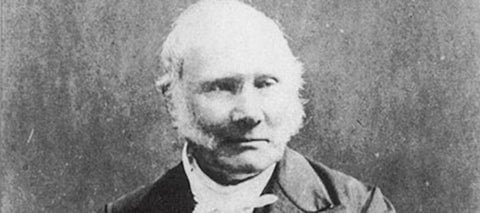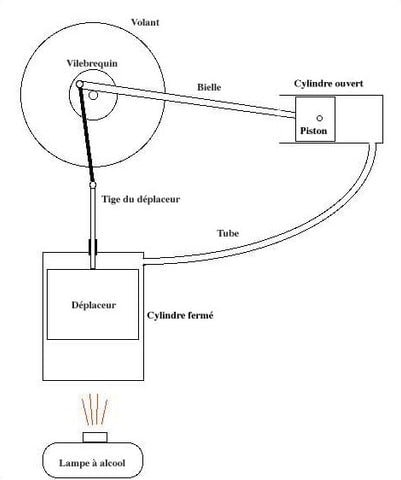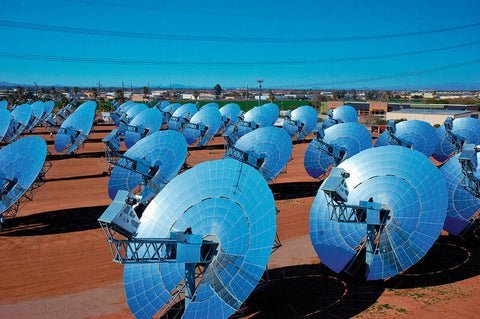Stirling Engine: Energy Revolution and Sustainable Innovation
The Stirling engine, a 19th-century invention, is experiencing a resurgence today due to its energy efficiency and versatility. This type of engine, often overlooked compared to its internal combustion counterparts, offers fascinating possibilities, especially in the field of renewable energy. In this article, we will explore in-depth how the Stirling engine works, its applications, and advantages, with a particular focus on recent innovations like the solar Stirling engine.
Who Invented the Stirling Engine?

The Stirling engine is an external combustion engine invented by Robert Stirling in 1816. Its unique design allows it to convert thermal energy into mechanical energy through a cyclic process of gas compression and expansion, often using air or helium. Unlike internal combustion engines, the Stirling engine does not emit exhaust gases, making it a cleaner and more eco-friendly option.
How the Stirling Engine Works

The Stirling engine, a marvel of mechanical engineering, operates on the principle of converting thermal energy into mechanical energy through a cyclic process. The following description, based on the provided diagram, outlines the process in four distinct phases:
-
Heating and Expansion: The cycle begins when the alcohol lamp heats the closed cylinder containing the displacer. The transferred heat increases the pressure of the gas (usually air or helium) inside the cylinder. The hot gas is then pushed into the open cylinder, where it causes the piston to expand. This piston movement generates mechanical energy, often transferred to a crankshaft.
-
Cooling and Contraction: After expansion, the gas is cooled, which lowers its pressure. Cooling can be achieved through exposure to ambient air or a heat exchanger. The cooled gas contracts, and the displacer pushes it back into the closed cylinder.
-
Gas Transfer: The displacer, moving within the closed cylinder, circulates the gas between hot and cold zones. This prepares the gas for the next cycle of expansion and contraction. The displacer rod, connected to the crankshaft system, synchronizes the displacer’s movement with that of the piston.
-
Energy Conversion and Mechanical Work: The continuous movement of the piston, caused by the cyclical heating and cooling of the gas, is converted into mechanical work by the crankshaft. The crankshaft, aided by its flywheel, regulates the movement and ensures smooth, continuous rotation, which can then be used to power various mechanical devices or generate electricity.
The Stirling engine is characterized by its efficiency and ability to operate with an external heat source, making it adaptable to various energy sources, especially renewables like solar power. This versatility, combined with its eco-friendly design and quiet operation, makes the Stirling engine increasingly relevant for applications requiring clean, sustainable energy.
The Solar Stirling Engine: A Sustainable Energy Solution
One of the most promising applications of the Stirling engine is in solar energy. The solar Stirling engine uses the heat from the sun, concentrated by parabolic mirrors, to heat the gas inside the engine. This approach allows for direct conversion of solar energy into electricity, offering a more efficient alternative to traditional photovoltaic solar panels.

Advantages and Applications of Stirling Engines
Stirling engines are known for their energy efficiency, durability, and versatility. They can be used in various applications, from small generators to heating and cooling systems, vehicles, and renewable energy production systems. Their low environmental impact and ability to use diverse heat sources make them especially attractive for sustainable initiatives.
The Future of Stirling Engines
The future potential of Stirling engines is vast, especially in the context of the global energy transition. Continued innovation in this field could lead to significant advancements in efficiency and cost reduction, making Stirling engines even more appealing for a wider range of industrial and domestic applications.

Conclusion
The Stirling engine, with its ingenious design and potential for sustainable use, stands out as a key technology in the quest for clean and efficient energy. Whether in solar applications or other fields, Stirling engines offer a promising path toward a greener energy future. As we continue to explore and innovate in this area, the Stirling engine remains at the forefront of the energy revolution, proving that ideas from the past can be key to the solutions of tomorrow.





Leave a comment
All comments are moderated before being published.
This site is protected by hCaptcha and the hCaptcha Privacy Policy and Terms of Service apply.